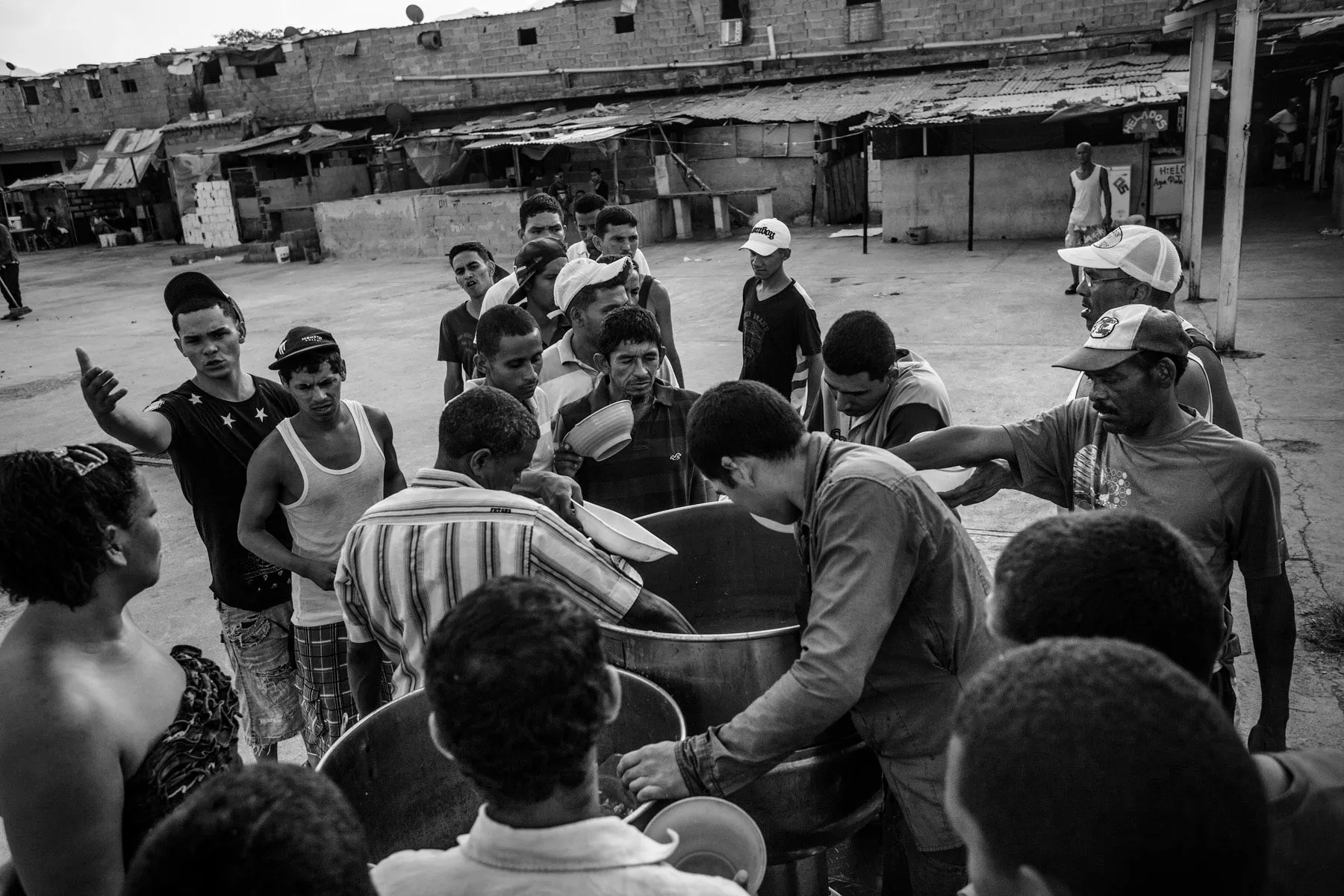For decades the Venezuelan penitentiary system has been in continuous decadence and this downward spiral seems to never end. One government after the other authorities have shown their own incapacity to organize the prisons network and give it the structure and relative functionality to achieve the goals it, in theory, has been created for, as known, reinsertion and reeducation of the inmates and, in some way, make them embrace the idea of positive changing, of paying their debts to society in relation to the mistakes and crimes committed and playing a main role in their own process for the reincorporation to society. Venezuelan General Penitentiary (PGV in Spanish), in the central state of Guarico, was one of the biggest and most crowded prisons in the country. Built originally with the concept of farm prison to house around 750 inmates with dormitories and workshops, it was extraoficial filled with more than 10 times its capacity but some numbers have placed its population around 10,000 at the point when the walls dividing a neighboring prison were taken down by the inmates that firstly took total control of the place around 2007.
Authorities, as is common in Venezuelan jail system, where as much as 65% of the inmates don't have a final judgement, completely lost the control inside the PGV, and were the prisoners, with their own unwritten codes and their own arsenal of weapons, who controlled the prison and everything that happened inside the walls. Progressively the direction and power passed from some hands to another and finally arrived to the bosses of criminal gangs serving time inside the jails, that have created a state inside the state controlling every movement of food, alcohol, money, drugs, weapons and even the visit time when mothers, wives and kids can come and spend a complete week together with their relatives. The gang principals, together with their selected team of sub chiefs, decide the awful side of life and death inside the prisons. They handle the guns, the drugs and the money. But also they bring the food in, they make the celebrations for the prisoners; families and they rebuild the infrastructure of installations many times reduced to ashes.
Oscar Castillo’s long-term photography project about causes and consequences of violence in Venezuela took him inside that prison almost three years ago, first as a general view of daily life in jail, after as an in-depth audiovisual research about a very rare example of a prison in hands of the prisoners, and then continuing with a very close and immersive following of the protagonists of these extreme reality, their families, their dreams of changing and the initiatives that could help to improve the cycle of violence and bring back a face to many young men generally known only for being the ones that pull the trigger or the ones that receive the bullets.
How to View Under Our Control
During the day, Under Our Control can be viewed on monitors inside the ICP Museum and during evening hours, images are literally “projected” onto the windows of the ICP Museum; they can be viewed from the sidewalk outside the Museum and are most visible after sunset. Learn more about Projected.
About the Artist
Oscar B. Castillo was born in Caracas, Venezuela in 1981. He studied psychology at Venezuelan Central University, but thirst for adventures put him early on the road. His professional work as a photographer has been geared towards social subjects that promote ideas of solidarity, tolerance, and respect.
As a teacher, he's been sharing his photographic and social points of view in participatory photographic workshops with kids from excluded communities in Mexico, youngsters in IDPs camps in post-earthquake Haiti or inmates inside Venezuelan prisons. He has taught as well in formal educational programs in Colombia, Argentina, and Venezuela, among others, and regularly collaborated with Foundry Photo Workshops. Castillo also participated in different talks and conferences in Norway, Colombia, Spain, and the United States about violence in Venezuela and its political context.
Castillo's work has been published by Time magazine, Time Lightbox, New York Times, New York Times International, Leica magazine, La Vie magazine, NZZ, Der Spiegel, Days Japan, and other international publications and has been exhibited in Angkor Festival in Cambodia, Visa pour l'image in France or Lumix Festival in Hannover, Germany as well as in Italy, Austria, Cuba, and Colombia. Recently his coverage of Venezuelan sociopolitical fractures was recognized by a Eugene Smith Fellowship 2016 and by Picture of the Year Latin America 2015 by receiving first prize in Political Propaganda and second prize in Mobile Phone categories. He is a 2014 Emergency Fund grantee by Magnum Foundation and a 2016 On Religion program grantee by Magnum Foundation to work on the situation of Islam in France. He is as well the 2016 Eugene Smith Fellowship winner. Castillo is alumni of the Eddie Adams Workshop XXVI where he was awarded the Tim Hetherington Special Award.


